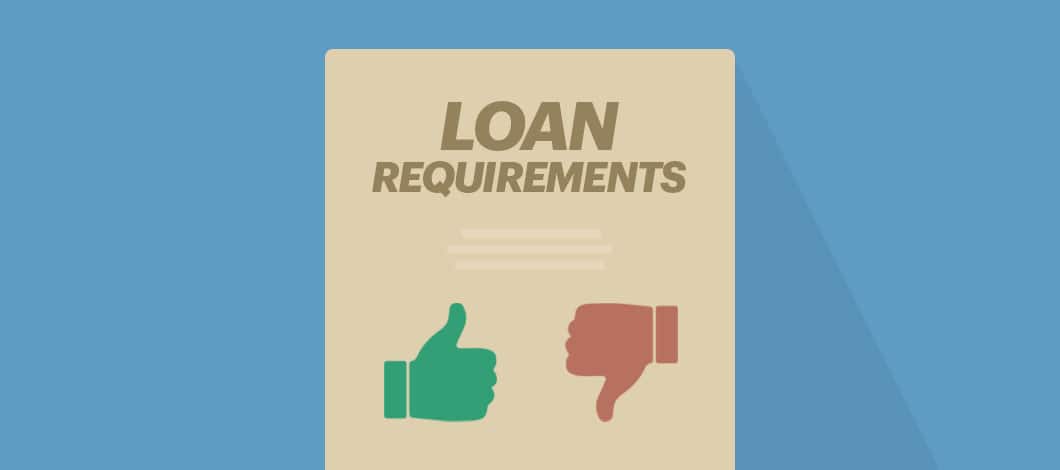Businesses pay for their assets and fund their operations with a combination of shareholder equity and loans. Each source of funds has its advantages and disadvantages. In particular, Bank loans for small business have a number of advantages over other types of loans, but they have their downsides.
Let’s look at bank loans and see how they might work to finance your business.
What Are Bank Loans?
Commercial banks offer small business loans to finance working capital, inventory, accounts receivable and purchases of fixed assets. Repayment terms can range from short terms of just a few months up to several years if financing equipment purchases or real estate. Interest rates can be fixed or variable.
Working with a bank allows a small business to develop a relationship that becomes a partnership as the business grows. The business owner is able to work with a banker who understands the company’s industry and is able to recommend financing solutions that meet the changing needs of the business.
In addition, the bank gets a reliable customer that becomes more profitable over time as the need for larger loans increases and the company keeps more deposits with the bank.
Why Should Businesses Borrow Money From Banks?
Borrowing money from banks to finance your business makes sense because you can borrow at lower interest rates and create a higher return on the capital invested in your business. Here’s how that works.
Owners and outside equity investors require a higher return on their investment for a number of reasons. First, investing in a small business is riskier than buying stock in a blue-chip firm that’s publicly traded on the New York Stock Exchange. Second, stock in a closely-held small business isn’t liquid. Investors can’t sell their stock at any time to get their money back as they could in a publicly traded company.
As a result, investors in closely-held businesses will typically look to receive a return on their investment of at least 20% or higher.
The interest rate on bank loans will be considerably lower, in the range of 5% to 10%. Therefore, you can borrow from the bank at these lower rates and use the financial leverage to increase your return on equity.
What Are Other Reasons to Work With a Bank?
The benefits of borrowing money from a bank don’t end with just taking out a loan.
In addition to loans, banks can offer other related products for a small business. For example, a bank could set up a business credit card, which the employees could use to purchase supplies. Or the business owner might go through the bank to get an auto loan to purchase a personal car for a spouse.
Occasionally, a company will have excess cash sitting in a checking account, doing nothing. Banks can offer short-term investment products, such as certificates of deposits or money-market funds, that let the business earn interest on its money.
Some banks may even offer discounts on mortgages and personal loans or checking accounts with no fees for a company’s employees.
Is Borrowing Money Good or Bad
A company that isn’t borrowing money to finance a portion of its operation isn’t taking advantage of its full potential to increase the return on equity for its shareholders.
Borrowing money is good because it allows you to fund your operations without having to give up any ownership in your business. Unlike investors, banks don’t have a say in how you run your business or what you do with your money. In addition, lenders don’t take a share of your profits. Their only return is the amount of interest you pay them.
Borrowing money does increase the financial risk for a business. However, when done with careful planning and control, using debt responsibly is a useful financial skill for a small business owner.
What Should You Consider When Applying for a Bank Loan?
While taking on some debt makes sense to improve your return on equity, the amount should be kept within reason. One limiting factor is your debt-to-equity ratio. This is the amount of debt your company has in relation to its equity capital. A typical rule-of-thumb is to have $1 in debt for each $1 in stockholder equity.
For example, if your business has $300,000 in equity, your total debt shouldn’t exceed $300,000. Note that this isn’t a hard-and-fast rule, but a general guideline. The debt-to-equity ratio can be higher or lower depending on the volatility of the industry.
Stable businesses, such as utilities, can operate comfortably with higher amounts of debt because they have more predictable cash flows. Other businesses, such as landscaping, may be highly seasonal and have periods with low cash inflows that aren’t enough to meet monthly loan payments. These types of businesses have to operate with lower amounts of debt.
Another consideration is your business’s debt service coverage ratio (DSCR). Your business must be generating enough profits to cover the loan payments and have funds left over to increase stockholders’ equity. A good DSCR would be 1.5 to 1 or higher.
To illustrate, suppose your monthly loan payments add up to $8,000 and your monthly operating profits are $14,000, where operating profits are defined as earnings before deductions for interest, taxes, depreciation and amortization (EBITDA). Your DSCR would be 1.75 to 1 ($14,000 divided by $8,000). This would be considered an adequate DSCR.
When considering a new loan, banks will calculate a company’s future DSCR by including the payments for the new loan.
Bank Loan Requirements for a Business
Although bank loans are attractive for their low-interest rates, getting approved for a bank loan isn’t easy.
Here are the typical requirements to qualify for a bank loan:
- Must have good credit history for your business and your own personal credit score
- Must have been in business for several years
- Have a history of timely payments on previous business loans
- Will have a low debt service coverage ratio after including payments on a new loan
What Are the Pros and Cons of Bank Loans for Business?
Bank loans are helpful to small businesses in these ways:
- Low-interest rates allow businesses to retain more of their profits.
- Good payment records build up a business’s credit history to qualify for larger loans at lower rates.
- Cash flow is more predictable with fixed monthly payments.
- Owners are able to develop a supporting relationship with their banker.
- Banks can offer loans with flexible terms to meet the diverse needs of their banking customers.
- Banks are able to make larger loans than other types of lenders.
Bank loans have the following disadvantages:
- Credit standards are higher, making it more difficult to get approved.
- Applications take longer to get approval because banks will go through a lengthy and more detailed analysis of your business, operations and finances.
- Personal guarantees of the owner will likely be required, which puts personal assets at risk.
- Collateral must be sufficient to cover the loan balance in event of default.
- Banks usually won’t finance startups.
- Banks don’t like to make small loans of just a few thousand dollars.
Banks Are Lenders for SBA Loans
In addition to making their own commercial loans to small businesses, banks make Small Business Administration (SBA) loans. These are loans that are partially guaranteed by the SBA and, as a result, banks are able to make business loans at lower rates. Some types of these small business loans may require lower amounts of down payments and offer longer repayment terms.
However, applying for an SBA loan requires considerable documentation and can take several months to get a decision.
Alternative Lenders
If you can’t qualify for a bank loan, there are alternative lenders who can offer loans for almost any situation and any credit score.
Alternative lenders offer accounts receivable financing, lines of credit, merchant cash advances, equipment financing and short-term working capital loans.
Advantages of Alternative Lenders
- Will accept lower credit scores
- Offers lower loan amounts compared to banks
- Faster approvals than banks, sometimes in only one day
- Require less documentation and paperwork
Disadvantages of Alternative Lenders
- Interest rates are higher because they are taking more risk.
- Loans from alternative lenders usually have shorter terms.






